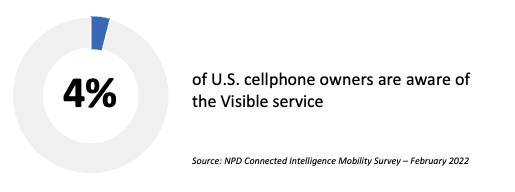
AT&T drops HBO Max from the Unlimited Elite plan
AT&T last week adjusted the top-tier service plan offered to its postpaid customers. The carrier’s top-end Unlimited Elite plan, which featured unlimited voice, text, and data, 40GB of mobile hotspot, and free access to HBO Max for $85, is replaced with a new plan dubbed Unlimited Premium. The new plan comes upgrades the monthly 40GB mobile hotspot limit to 50 GB, though it drops the free HBO Max subscription. Existing AT&T customers on the retired Unlimited Elite plan will continue to have free access to HBO Max.
The NPD Take:
- AT&T’s decision to discontinue the HBO Max access for its top plan customers is understandable considering the high monthly cost of the service ($15/month for the ad-free version) on top of all the additional incentives (over-priced trade-in amounts, extension of device payment terms from 24 months to 36 months) that put financial pressure on the bottom line. AT&T has used these incentives (including the HBO Max subscription) to grow its base and has had quite a success over the past two years. The end of the HBO Max offer coupled with AT&T’s earlier comments that it will pull its foot off the pedal for device promotions signal a shift in strategy from growth to retention.
- AT&T’s rivals Verizon and T-Mobile continue to offer their top-paying customers free access to video subscription services (Netflix at T-Mobile / Disney+ at Verizon), which have become table stake offers in the high-end postpaid space. According to the NPD Connected Intelligence Mobility survey, 13% of smartphone owners are dissatisfied with their carriers because they do not provide free video subscription services. And 23% of cellphone owners who plan to switch to a new carrier in the next 12 months (at the time of taking the survey in February 2022) cited the free subscription offer at the new carrier as a switching reason.
Verizon takes a page out of T-Mobile’s branding playbook
Visible has been an interesting digital project for Verizon, which lacked a compelling prepaid solution before the acquisition of Tracfone. The Visible service debuted in May 2018 with an “invitation-only” model, requiring new users to receive an invitation from an existing user to join the service, and then quickly opened up to any user wishing to bring their phone (limited to select models) to the network. Visible then started appearing on nationally broadcasted TV advertisements explicitly mentioning the Verizon network in mid-2020. Visible’s new ads launched last week, on the other hand, feature the MVNO’s new “Visible by Verizon”, similar to the T-Mobile’s rebranding of the MetroPCS service as “Metro by T-Mobile” in late 2018. Notably, the “Visible by Verizon” branding that appears throughout the TV ad has yet to make its way to Visible’s online store. Incidentally, Verizon has also filed a trademark for the “Total by Verizon” brand as the carrier is likely getting ready to rebrand Tracfone’s Total Wireless service, which enjoys considerable distribution thanks to its authorized dealer program.
The NPD Take:
- The Visible MVNO has been around for four years, though according to the NPD Connected Intelligence Mobility survey, only 4% of cellphone owners are aware of the service (up from 2% two years ago). Increased TV exposure coupled with the Verizon brand reinforcement should help Visible gain more ground at a time when finally challenged postpaid customers will seek more affordable service offerings with a reliable network.
- Verizon’s trademark filing for the “Total by Verizon” brand is a signal of the carrier’s branding intentions with the Tracfone assets acquired earlier in November 2021. Verizon’s lead in network perception coupled with Tracfone’s aggressive service pricing can attract new prepaid customers (as well as the inflation-challenged postpaid customers), though it will be important to find the right price variance balance to avoid possible cannibalization that might hurt the Verizon postpaid base and ARPU.